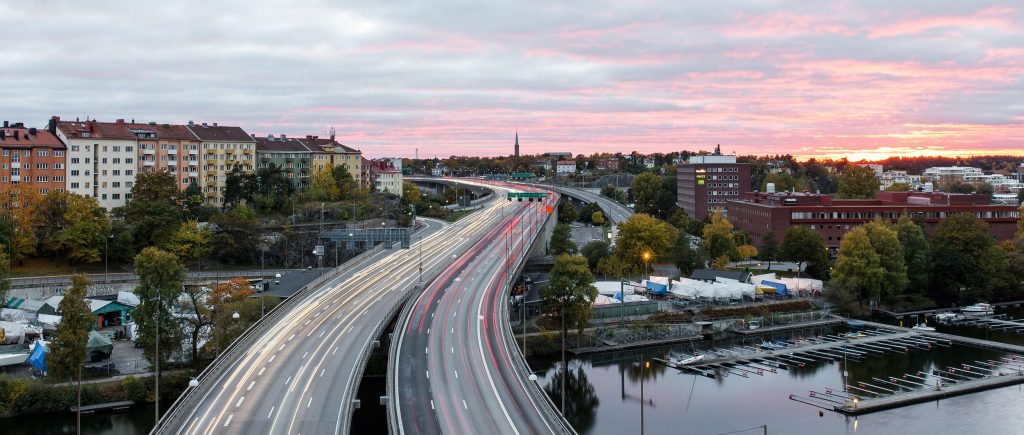
Publications by the Thematic Group for Green and Inclusive Urban Development in the Nordics (2021-2024)
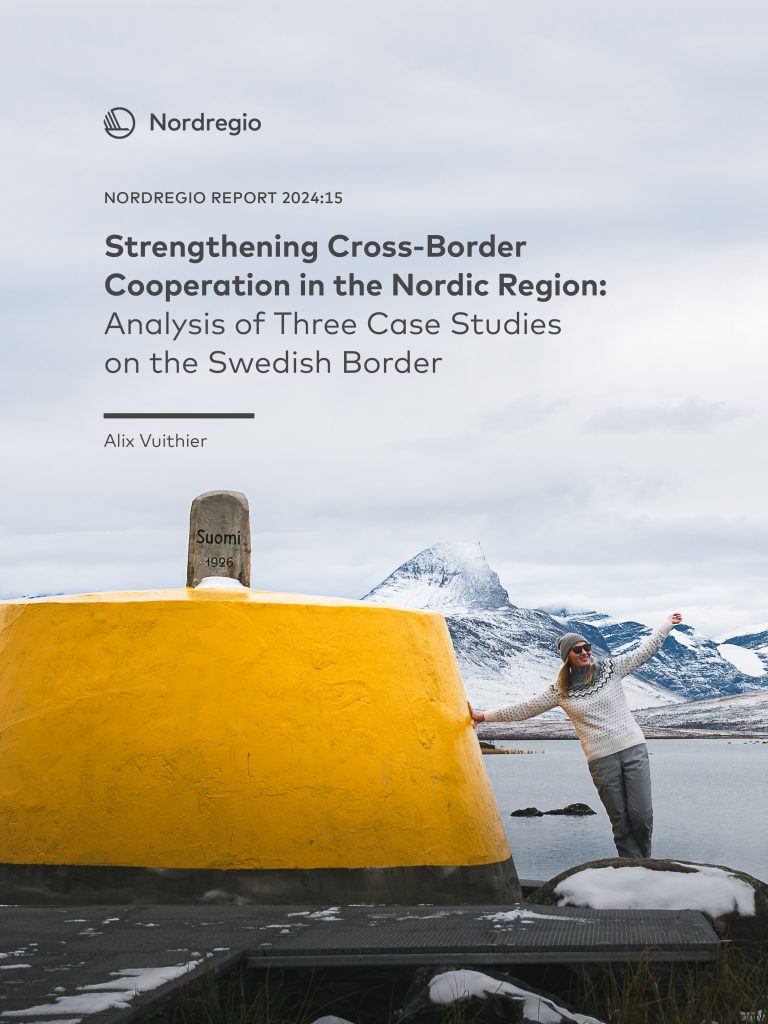
Strengthening Cross-Border Cooperation in the Nordic Region: Analysis of Three Case Studies on the Swedish Border
Cross-border municipalities in Sweden and its Nordic neighbours are already well integrated. They have strong links and cooperate closely, in particular through cross-border committees involving local and regional authorities or through direct cooperation at the municipal level. However, issues hindering greater integration of cross-border municipalities and regions remain.
This study focuses on three cases in the Swedish-Finnish, Swedish-Norwegian and Swedish-Danish border regions that face different topographical challenges. Through interviews with local and regional stakeholders, the main challenges with regard to furthering cross-border integration were identified.
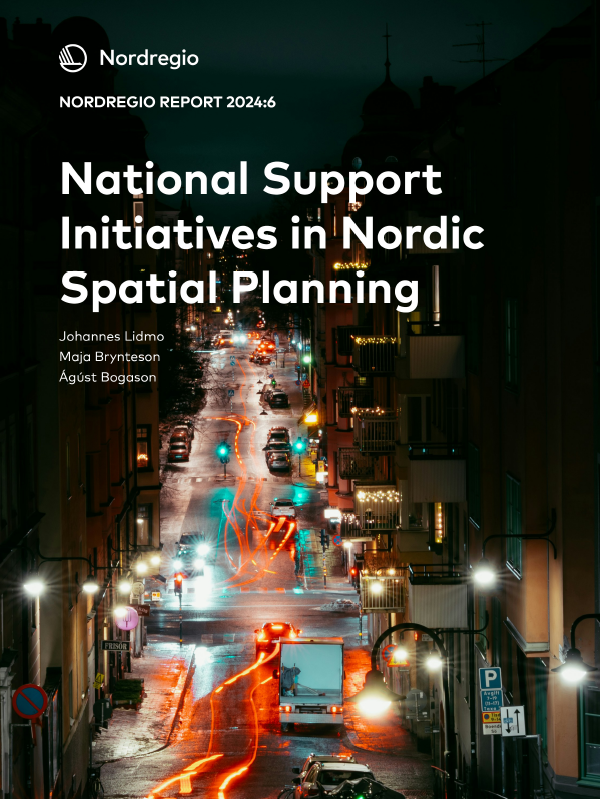
National Support Initiatives in Nordic Spatial Planning
When it comes to spatial planning, central governments in the Nordic countries often have limited power to influence local-level priorities, particularly with respect to regulating land use and adopting a range of policies that impact sustainable urban development.
In parallel, various new planning approaches, as well as a range of nationwide support mechanisms (from nationwide private stakeholders to the central government), have emerged in the Nordic countries, often with the aim of supporting and steering municipalities’ efforts to achieve sustainable urban development.
This report aims to better understand such initiatives and how they are connected to spatial planning efforts in Nordic municipalities by examining one national support initiative in each Nordic country.
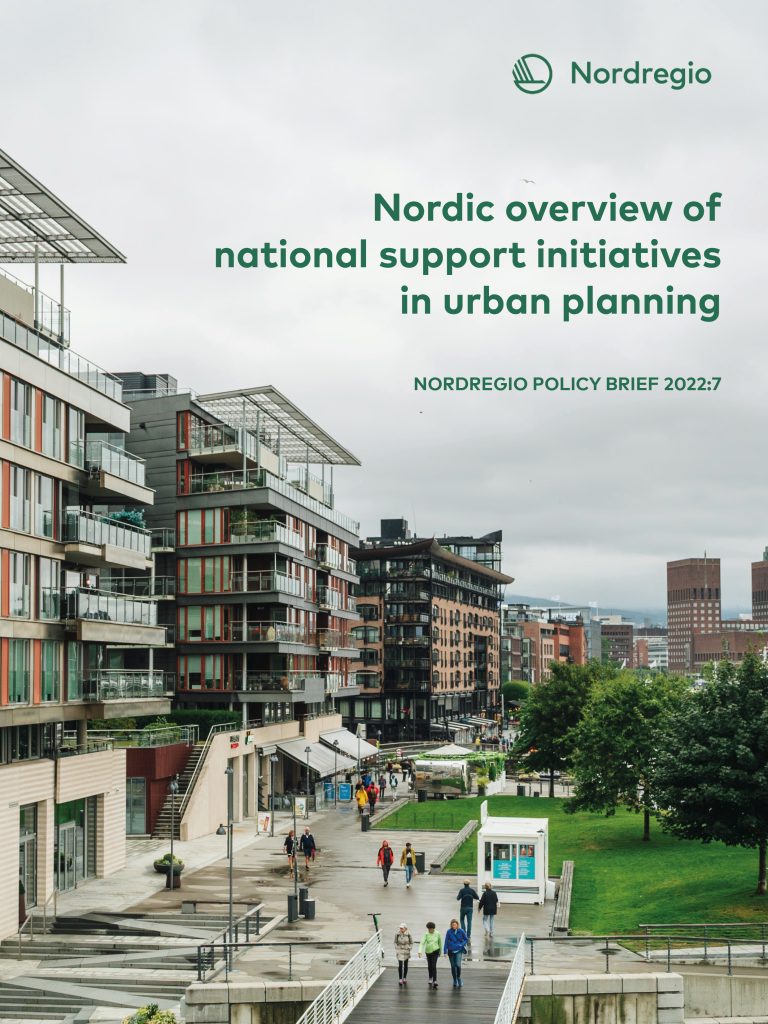
Nordic overview of national support initiatives in urban planning
As the Nordic region seeks a greener, more competitive, and socially sustainable future, understanding the diversity of ongoing national interventions and mechanisms in local and regional land use and spatial planning is needed.
The focus on Nordic national support initiatives is therefore to understand both the regulative and national support aspects (top-down) and the actual needs (bottom-up) to achieve national cross-sectoral targets as these relate to green and inclusive urban development. This policy brief presents a mapping of the relevant initiatives across the Nordic countries (Denmark, Finland, Iceland, Norway and Sweden).
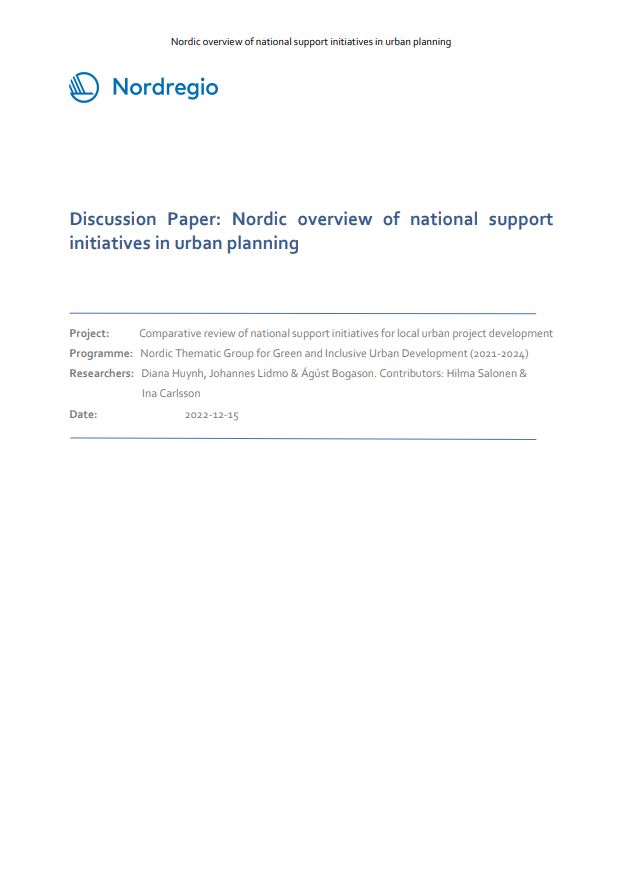
Discussion Paper: Nordic overview of national support initiatives in urban planning
The Discussion paper takes an in-depth look at the national support initiatives in urban planning. It considers the ways in which the Nordic planning systems have evolved to incorporate measures for green and sustainable urban development over time.
It provides an overview of relevant national planning support initiatives that have been selected based on information from members of the Nordic Thematic Group for Green and Inclusive Urban Development (2021-2024) and further research.
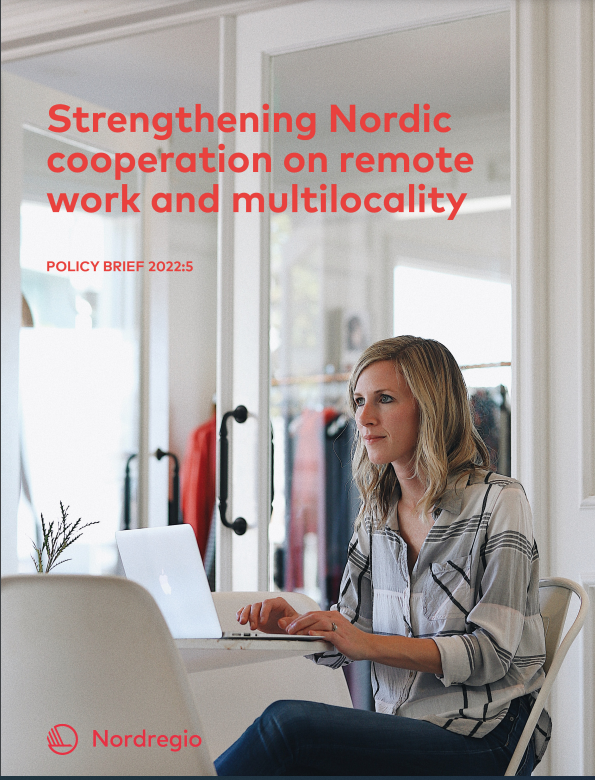
Strengthening Nordic cooperation on remote work and multilocality
The remote work experiences during the pandemic have been relatively similar in the five Nordic countries. Similar trends are also evident, though to differing degrees, concerning the effects on different places throughout the region.
The most notable differences between the countries relate to the regional policy responses, and it is perhaps here that the most significant potential for Nordic added value emerges. This policy brief was published in September 2022.
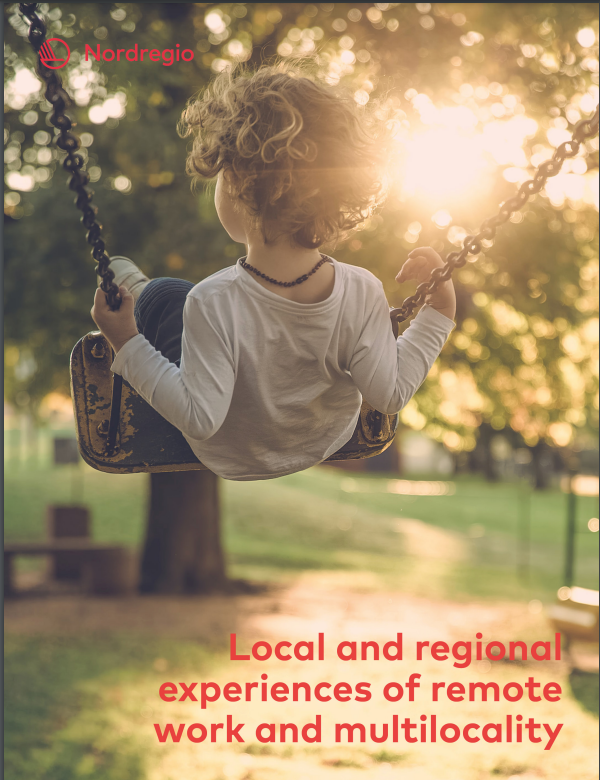
Remote work - Local and regional experiences of remote work and multilocality
This report deepens our understanding of how increased remote work affects Nordic municipalities and regions. Survey results show that remote work is generally seen positively, generating opportunities for long-term economic growth, maintaining public services, and revitalising the community.
There is excellent potential for Nordic cooperation in developing strategies to address the challenges and make the most of the opportunities associated with increased remote work for Nordic regions and municipalities. Collaboration at both levels could be incredibly valuable in strengthening both national and local efforts to make the most of the opportunities increased remote work offers for Nordic people, places, and planning in the long term.
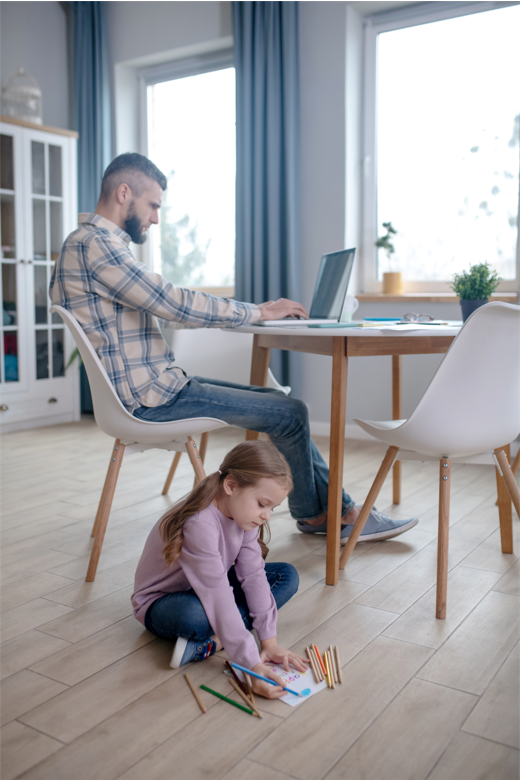
Remote work - Effects on Nordic people, places and planning 2021-2024
This report is the first outcome of the project Remote work: Effects on Nordic people, places and planning 2021-2024. This report provides a broad understanding of the current situation (May 2022) regarding remote work in the Nordic countries, particularly concerning potential urban and regional development effects. It provides insight into emerging trends in the countries based on Nordic research, statistical data, and stakeholder interviews. Further, it considers the national-level policy frameworks that “set the stage” for developing remote work practices in the Nordics.
Our findings suggest that higher levels of remote work are likely to be maintained in the long term in all Nordic countries, at least to some degree. Importantly, however, there is little evidence to support a large-scale shift towards a “remote first” mindset among Nordic workers or workplaces. This means that, for most workers and workplaces, the most likely scenario will be some form of hybrid arrangement. The effectiveness of these arrangements in promoting wellbeing and quality of life for workers, as well as the extent to which collaboration and innovation thrive under hybrid conditions, will both be key factors in determining whether remote work remains more common in the long term.

Publications by the Thematic Group for Sustainable Cities and Urban Development (2017-2020)
The publications derive from projects under the Nordic Thematic Group for Sustainable Cities and Urban Development 2017-2020. The research contains different perceptions and perspectives on the sustainable development of cities, challenges and opportunities in the Nordic region. Publications give knowledge of the current situation of planning, urbanisation, population, and transportation in Nordic cities as well as future possibilities. Finalised Reports and shorter Policy Briefs are available here as soon as they are published. Find ongoing projects under "Projects".
Click on the titles to find the whole publication.
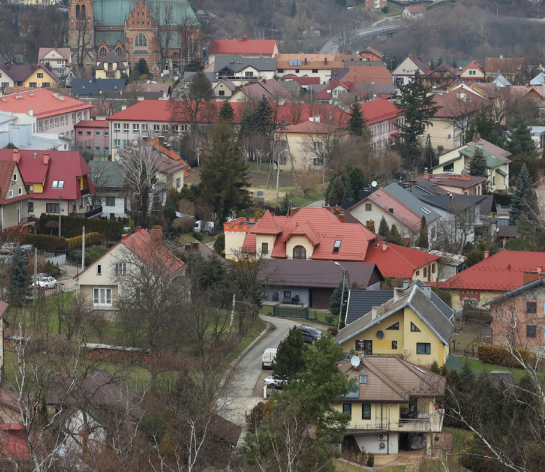
Urban-Rural Linkages
About half the population of the Nordics has access to second homes and use them during the summer or winter seasons and weekends. Regular retreats to rural areas by people from the towns and cities impact small towns and municipalities. But it lacks attention in policy and spatial planning. These and other issues facing small towns are analysed in the book “The Routledge Handbook of Small Towns”. Nordregio Researchers have contributed to a chapter about urban-rural integration through second-homes.
The chapter ”Urban-Rural Linkages” is based on an analysis of Nordic statistics and qualitative fieldwork in five Nordic municipalities. It seeks to investigate if and how second homes and seasonal tourism are being embraced as part of the Nordic spatial planning and policy agenda. It also looks at the implications of second homes and seasonal tourism for urban-rural integration throughout the Nordic region.
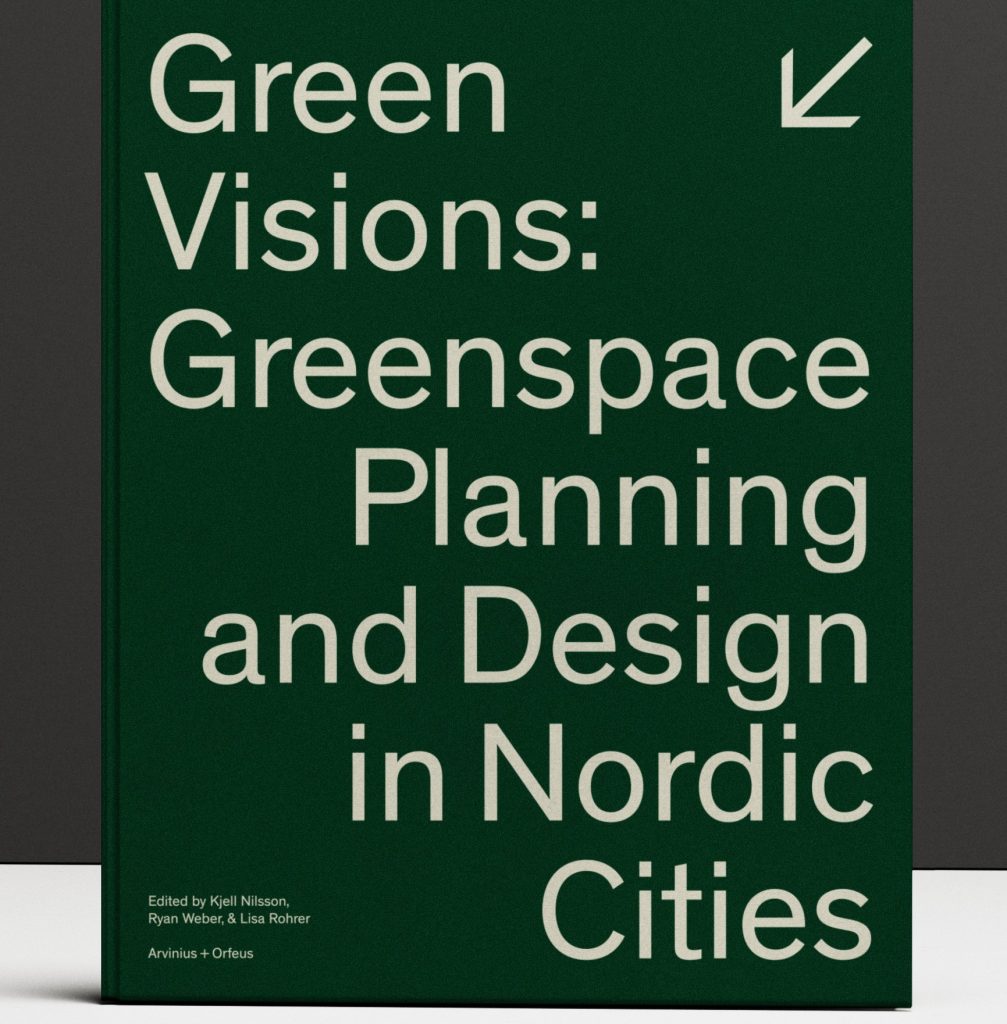
Green Visions: Greenspace Planning and Design in Nordic Cities
Nordic cities are renowned for promoting accessibility to greenspace, both in terms of preserving natural landscapes as well as establishing green public space within highly developed areas. At the same time, multiple pressures threaten our access to urban green and recreative spaces. Increasing liberal planning approaches further commodify land, and even lasting good practices are under development pressure. Ethnic and economic segregation has also led to significant intra-urban spatial disparities in access to high-quality green and recreation spaces.
Green Visions explores and evaluates the historical pathways, contemporary development, and future outlook for planning, design, and policy-making of green and recreational cities in the Nordic Region.

Report 2020: Transport for Regional Integration – Insights from three Nordic cross-border regions
Acknowledging that cross-border transport infrastructure is paramount for the Nordic Region to reach the vision of becoming the most sustainable and integrated region by 2030 (Nordic Council of Ministers, 2020), this report discusses the challenges of planning and developing transport connections across national borders.
The report concludes by outlining the role of Nordic institutions in facilitating the work of the national transport authorities. Commission studies that investigate the value of cross-border links for the development of the countries and create forums to mediate discussions between stakeholders from different governance levels are pinpointed as means of overcoming obstacles and improving the integration of the Nordic Region.

Report 2020: Transit-oriented development in the Greater Copenhagen Region – Insights from small- and medium-sized cities
During the Covid-19 pandemic, challenges inevitably emerged as countries shut down borders. This effectively put cross-border cooperation into gridlock. Before the Covid-19 crisis, however, the Greater Copenhagen Region (GCR) had been chosen to illustrate the potential challenges of planning and development in a Nordic cross-border context. This is the scope that this working paper is operating within.
This report aims to provide a backdrop for future discussions about ways in which spatial and transportation planning, particularly in small- and medium-sized (SMS) cities, can ensure sustainable mobility solutions and enhance local and regional integration, supporting regional development in Greater Copenhagen, and Nordic collaboration more broadly.

Report 2020: The right to access the city: Nordic urban planning from a disability perspective
The purpose of this report is to add a disability perspective to the discussion on the inclusive city in the Nordic region. The report primarily focuses on the city and the local level, the international framework has proven to be of importance. But it seems to be especially important in countries early in the process of implementing the universal design.
The report points to the importance of participation and representation in universal design. All the cities in this study emphasize the insights and contributions of people with disabilities in the planning process, in most cases in the form of institutionalized disability councils.
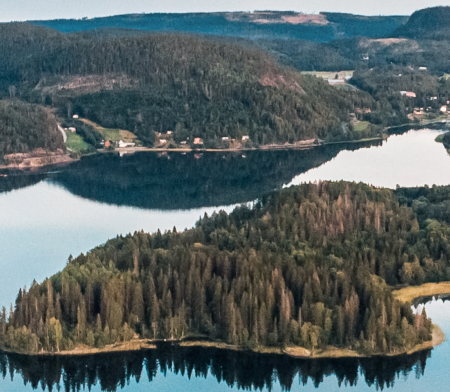
Report 2020: The Kvarken ferry link and its importance in cross-border cooperation and integration
Over the decades, the depth and breadth of cooperation between the Finnish and Swedish sides of Kvarken have followed changes in the ferry connection. From the 1970s onwards, passenger traffic over the Kvarken Strait increased significantly, and cross-border cooperation became more established and varied. However, the abolishment of tax-free sales on the Kvarken ferry in 1999 was, in many ways, a turning point that led to a significant decline in traffic and had a severe, negative effect on cross-border relations.
This report shows that a reliable transport link has been central to maintaining and developing cross-border relations in the Kvarken region. Sea traffic has been the lifeline enabling cross-border interactions and exchanges throughout the centuries, and cross-border cooperation has remained largely dependent on the ferry connection until this day.
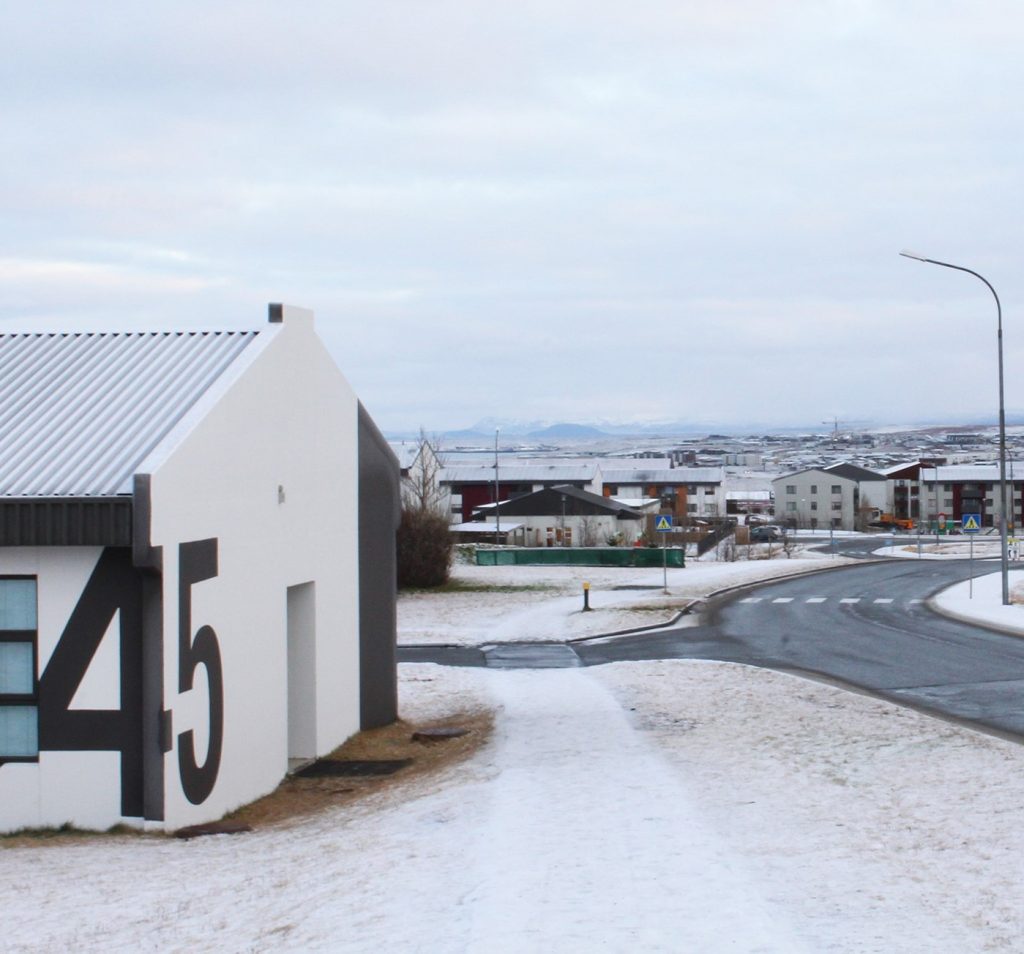
Report 2020: Overcoming barriers to social inclusion in Nordic cities through policy and planning
This report examines how Nordic governments and municipalities seek to overcome barriers to social inclusion and counteract inequality and segregation through policy and urban planning.
Overcoming barriers to social inclusion is understood as the desire to improve the terms on which different individuals and groups take part in society through urban policy and planning while counteracting the negative effects of inequality. Examples of policy and planning initiatives to create more inclusive cities and communities can be found in all the Nordic countries.
However, inclusion is a multifaceted issue and the specific challenges, and approaches to dealing with these challenges, vary among countries and cities. To capture this diversity, this report examines five different thematic and geographical cases detailing strategies for inclusion from different perspectives in varying contextual settings.

Report 2020: Building affordable homes: Challenges and solutions in the Nordic Region
Nordic cities are segregated, and new housing development, application of diverse forms of tenure, and housing subsidies are examples of tools that can either worsen or reduce segregation, depending on how they are used.
The focus of this publication is primarily on new buildings for low-income and vulnerable groups, often referred to in English as ‘affordable housing', that is, housing for groups on the market’s periphery who suffer from high barriers. The financial aspects of housing are central, especially regarding new-building costs, subsidies, social housing models, and affordability.
The market seems unable, on its own, to supply enough suitable housing for students, young people, low-income groups, and newly arrived immigrants, among others. This is of political interest since it challenges the whole idea of the Nordic welfare model, and social cohesion and equality as characteristics of the Nordic region.

Policy Brief 2020: Compact cities trigger high use of second homes in the Nordic Region
The phenomenon of spending time in a second home—a sommerhus, sumarhús, mökki, hytta or fritidshus—is an expression of the high quality of life in the Nordic countries. Estimations suggest that around half of the Nordic population have access to a second home via ownership, family or friends, and these ‘rural’ second homes are increasingly used all year round. The dominant understanding of the Nordic region is ongoing urbanisation, where people move from rural areas to urban centres.
The analyses in this study nuance this understanding as there is also mobility from urban permanent homes to rural second homes ongoing throughout the year. This policy brief presents possibilities for how spatial planning can include second home users and seasonal tourists more directly as a factor for local development, in statistics and through proactive spatial planning.
In the project “Urban-rural flows of seasonal tourists – local planning challenges and strategies”, five Nordic municipalities with some of the highest amounts of second homes were chosen for in-depth analysis: Odsherred, Denmark; Pargas, Finland; Grímsnes og Grafsningshreppur, Iceland; Nore og Uvdal, Norway; and Härjedalen, Sweden.
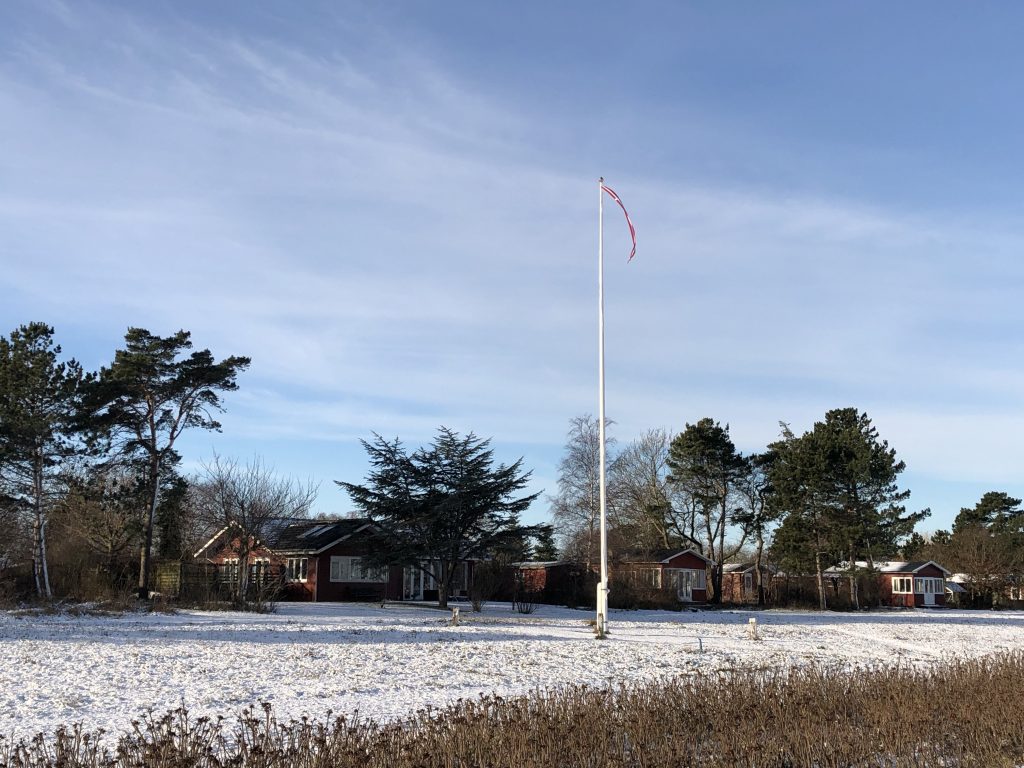
Report 2019: Urban–rural flows from seasonal tourism and second homes: Planning challenges and strategies in the Nordics
Estimations for the Nordic population is that half of the 27 million inhabitants have access to a holiday home, via ownership, family or friends. People use second homes during the summer or winter season and increasingly at weekends; therefore, our analyses find that a continuous counter-urbanisation process exists in the Nordic Region.
We conclude that second homes and seasonal tourists are primarily considered a positive asset for job creation, planning of cultural activities and provision of services. At the same time, the central challenges are adapting the welfare system and services to these large flows of voluntary temporary inhabitants. This motivates us to recommend policymakers and decision-makers in the Nordic Region to discuss whether municipal income taxes should be shared between municipalities, based on the locations of the permanent home and the second home.
The main rationale behind this recommendation is that the infrastructure and welfare system could then be better adapted to the actual number of people who spend time in each municipality and make use of the local welfare system. I hope the study will help to bridge the perceived divide between urban and rural areas, says Elin Slätmo.
Errata to the map Second Homes in 2017 (p.13 in the report): The statement “In total, there are 67 secondary homes per 1000 inhabitants in the Nordic Countries.” Should be “ In total, there are 65 secondary homes per 1000 inhabitants in the Nordic Countries.”

Policy Brief 2019: The value of high-speed trains in intermediate regions
This policy brief examines how small and medium-sized (SMS) cities can benefit from the introduction of a high-speed train connection. Our results indicate that such transport infrastructure projects might not be the best fit for all SMS cities, even though they can contribute to local urban developments, especially in medium-sized cities.
The background information document offers a more detailed view upon the researched areas and summarises the main elements from the workshops and interviews with local stakeholders. These discussions aimed at answering the following question in a number of medium- and small-sized cities in Värmland–Østfold that might be connected to the future HST corridor between Oslo and Stockholm: What could be the effects of the introduction of a faster train service between Oslo and Stockholm on the urban development in your municipality?
More precisely, the discussions focused on urban and territorial developments in the selected municipalities (Arvika, Askim, Karlstad, Kristinehamn, Lillestrøm, and Årjäng).
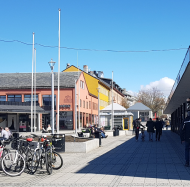
Policy Brief 2019: Bringing attention back to the city centre: six Nordic examples
Many small and medium-sized Nordic cities are dealing with challenges related to the role and development of their city centres. They use strategies related to urban planning, governance, and business development, to aim for greater compactness, attractiveness, economic development, and sustainability.
What can we learn from the Nordic countries’ different approaches to city-centre development? This policy brief summarises investigations in six small and medium-sized Nordic cities.
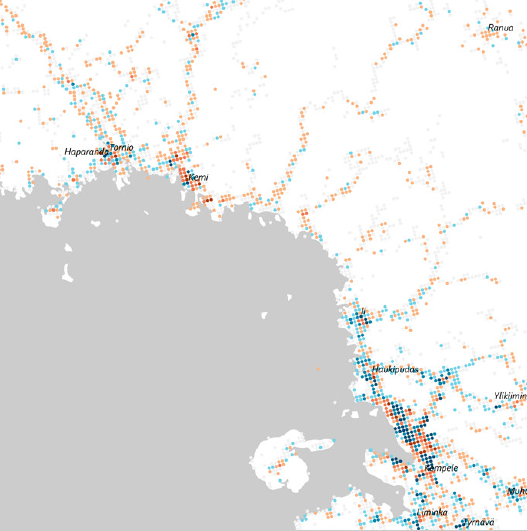
Report 2019: Population Change Dynamics in Nordic Municipalities – Grid data as a tool for studying residential change at local level
The Nordic Region is currently undergoing a number of major demographic trends. The population is growing in all five Nordic countries, largely due to immigration, while also becoming increasingly concentrated in urban settlements. At the same, development in the Nordic Region is unbalanced: different regions and municipalities are experiencing noticeably different lines of development.
In this report, grid-based statistics from different Nordic countries are used in an integrated way to study demographic changes at the local level within regions, municipalities, and cities; especially cities or towns that could be considered small and medium-sized. One of the main methodological questions guiding the study is how fine-grained grid-level statistics can be used as a complement to more general statistics bound to administrative areas such as municipalities and regions.
This report seeks to form a more nuanced understanding of the population developments occurring in the Nordics that may be less apparent, or not evident at all, at more general territorial levels.
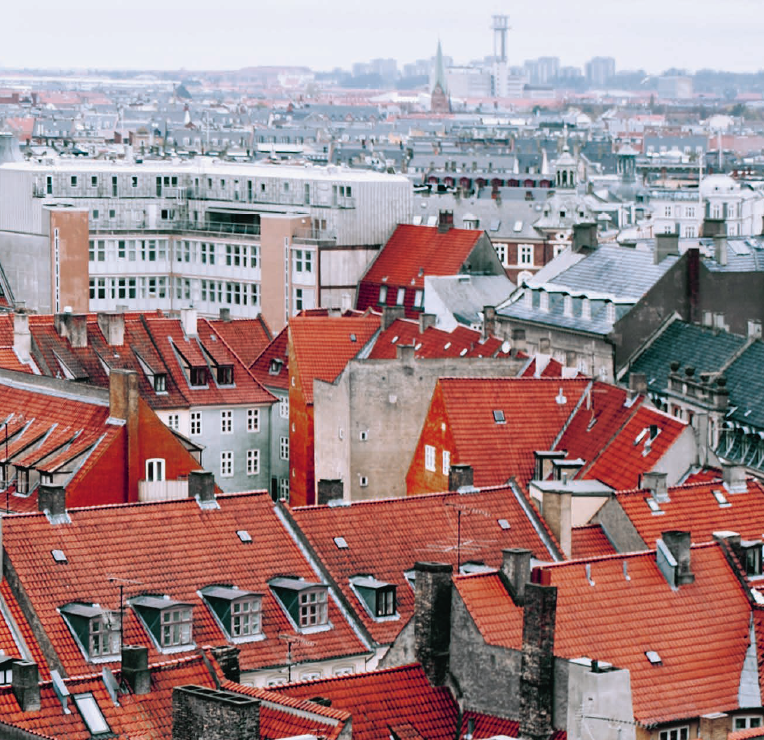
Report 2018: The Compact City of the North – functions, challenges and planning strategies
In this report, the characteristics and consequences of the compact city ideal in Nordic cities, and more specifically in their city centres, are investigated. The research was done in the form of a series of small case studies of city-centre development, and they are presented thematically. They focus on public spaces and the threat from external shopping, densification as a planning strategy, new housing as a planning tool, and finally governance and actor collaboration.
The Nordic region is dominated by small and medium-sized cities, and the following cities have been chosen for the investigation of city centre challenges and planning strategies: Bodø (Norway), Kokkola (Finland), Mariehamn (Åland), Mosfellsbær (Iceland), Sorø (Denmark) and Västervik (Sweden).
This study was interested in what the city centre is or should be when it no longer has an obvious role. The investigations have led us to conclude that there is no essence to be found and it is instead important to understand the city centre as dynamic and constantly changing. In line with this, the importance of actor collaboration and flexible urban spaces are among the lessons learned from the study.
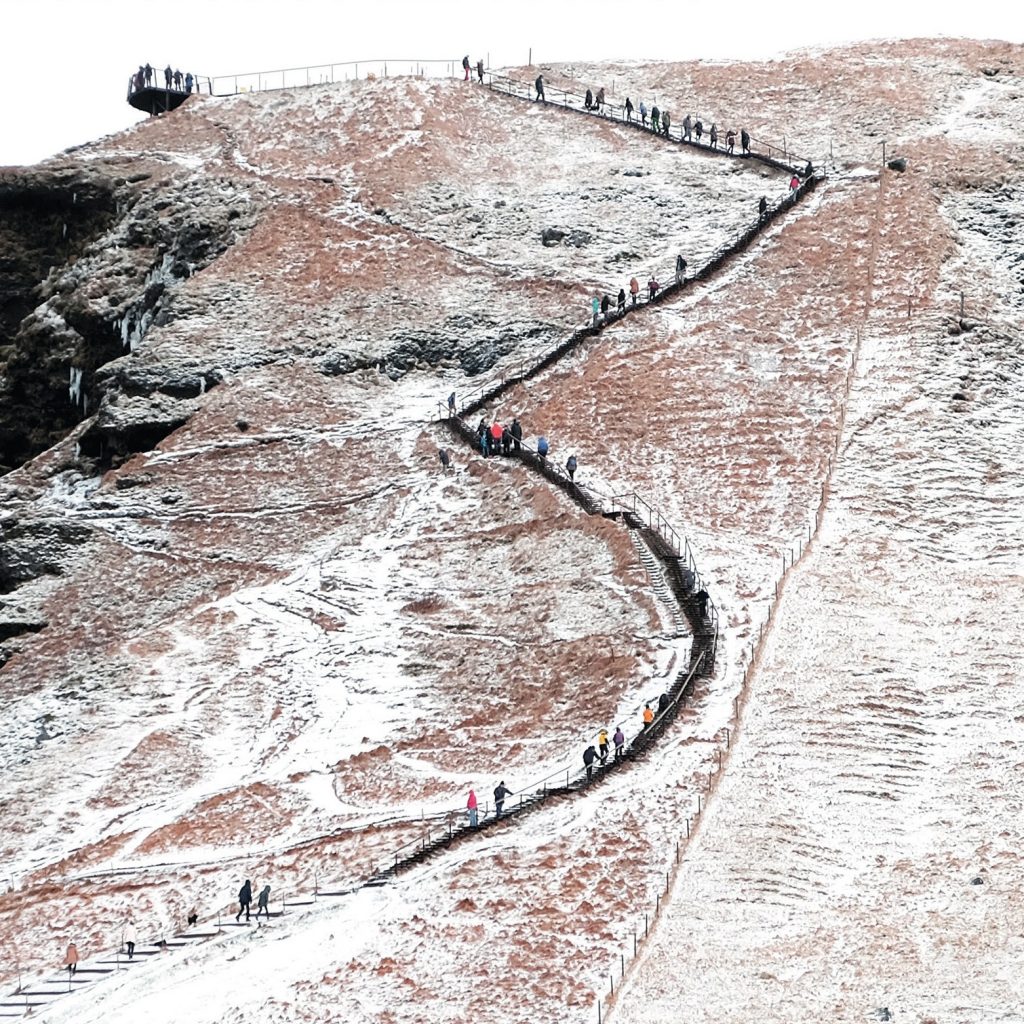
Report 2018: Nordic geographies of urbanisation
From a European perspective, the Nordic Region is sparsely populated but also one where, in 2016, more than 75% of the population lived in urban settlements with more than 2,000 inhabitants. Moreover, population growth has been concentrated to the larger functional urban areas for decades, though, in 2016, around 45% of the Nordic population still lived outside these areas.
In this article, an urban settlement population map covering the entire Nordic Region is for the first time presented which, in combination with other spatial data, provides new insights into the various ongoing urbanisation processes, urban-rural relations and small and medium-sized city developments in the Nordic Region.